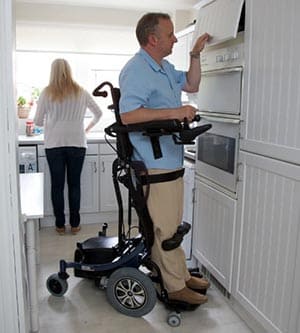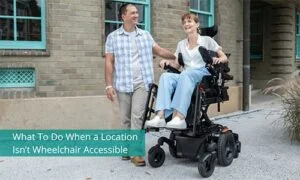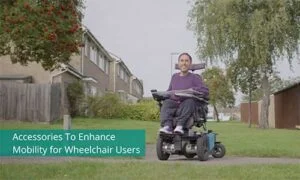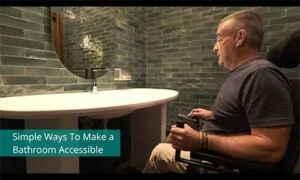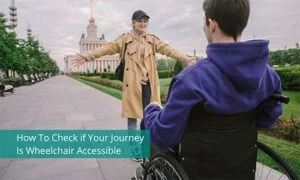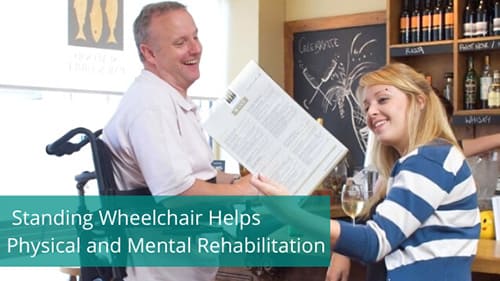
Standing helps the user physically and mentally. We know and understand these benefits from a physical therapy point of view as well as users sharing their stories with us! The benefits of standing to the mind and body will be illustrated further:
A Karma user once shared with us that they have been using a standing wheelchair for the past 7 years, and the “standing” feature was what he felt, the most important part of his rehabilitation. If he didn’t get out of bed and stand up, his whole body felt wrong. After using the standing feature long-term, his dizziness and stomach discomfort gradually improved.
1. Physical Benefits from Standing
In addition to reducing the occurrence of pressure sores on the buttocks and reducing the stiffness of the muscles and lower limb joints, standing’s biggest benefit is that it slows down osteoporosis.
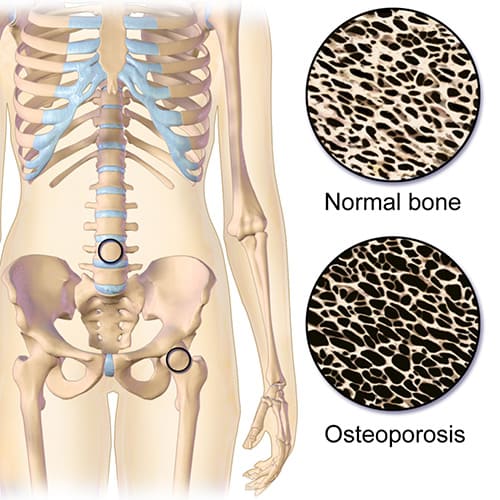
Standing wheelchair’s biggest benefit is that it slows down osteoporosis.
When the user sits and lays down every day for too long, the bones stop bearing any weight which worsens the bone density. Even if the user takes calcium supplements, they may wonder why they are still at risk of osteoporosis. The main reason is that..in order for the body to absorb calcium the bones need to be stimulated . This is why doctors say that exercise is the only way to slow down osteoporosis.
Therefore, using standing aids help to stimulate the increase of bone density, slow down the rate of bone loss, and gradually make your body healthier.
2. Standing Helps the User’s Life and Mind
Standing wheelchairs improve life function
Being able to stand up compensates for the height difference from the sitting position. It allows the user to reach things such as objects on shelves or bookcases, improving the user’s sense of independence and making work more efficient. These are all benefits that standing can bring.
Standing wheelchairs increase self-confidence
Wheelchair users often have some disadvantages during peer to peer interactions because of the height difference from the sitting position. Standing allows the wheelchair user to talk with people with the same level of eye contact. Interacting with people at the same eye level can eliminate the barrier or socialization and interpersonal relationships that wheelchair users usually have.
3. Am I Eligible for Standing Rehabilitation?
After reading about all the benefits of a standing wheelchair you must want to try the standing wheelchair for yourself. So, what is the first step?
Think about your day to day life:
- When you wake up in the morning and go to get on your wheelchair, do you transfer to the wheelchair on your own or do you need help from others?
- How many times do you go out in a month?
Knowing more about a user’s lifestyle can determine whether or not their bones and joints are able to bear any weight as well as if there will be a chance of osteoporosis. So, if you are bedridden, does that mean you are not suitable for standing rehabilitation?

Even with a severe disability, there is always a need to stand. Sometimes it requires the help of professional assessments and step by step practice to reach the level of being able to stand. Before anyone uses a standing assistive device, you must first go through the assessment of a therapist and train according to the method set out by the therapist to avoid secondary injury.
Summary
On average, an able-bodied person stands and walks up to 3 hours a day, about ⅛ of their day. Standing is a very important daily activity! We hope that by reading this blog post that you will be encouraged to try standing rehabilitation, continue to improve your physical condition, and make your lives more independent!
You can contact your local dealer to find out more about a Standing Wheelchair or other power wheelchairs.
Keep Reading

 Global
Global
